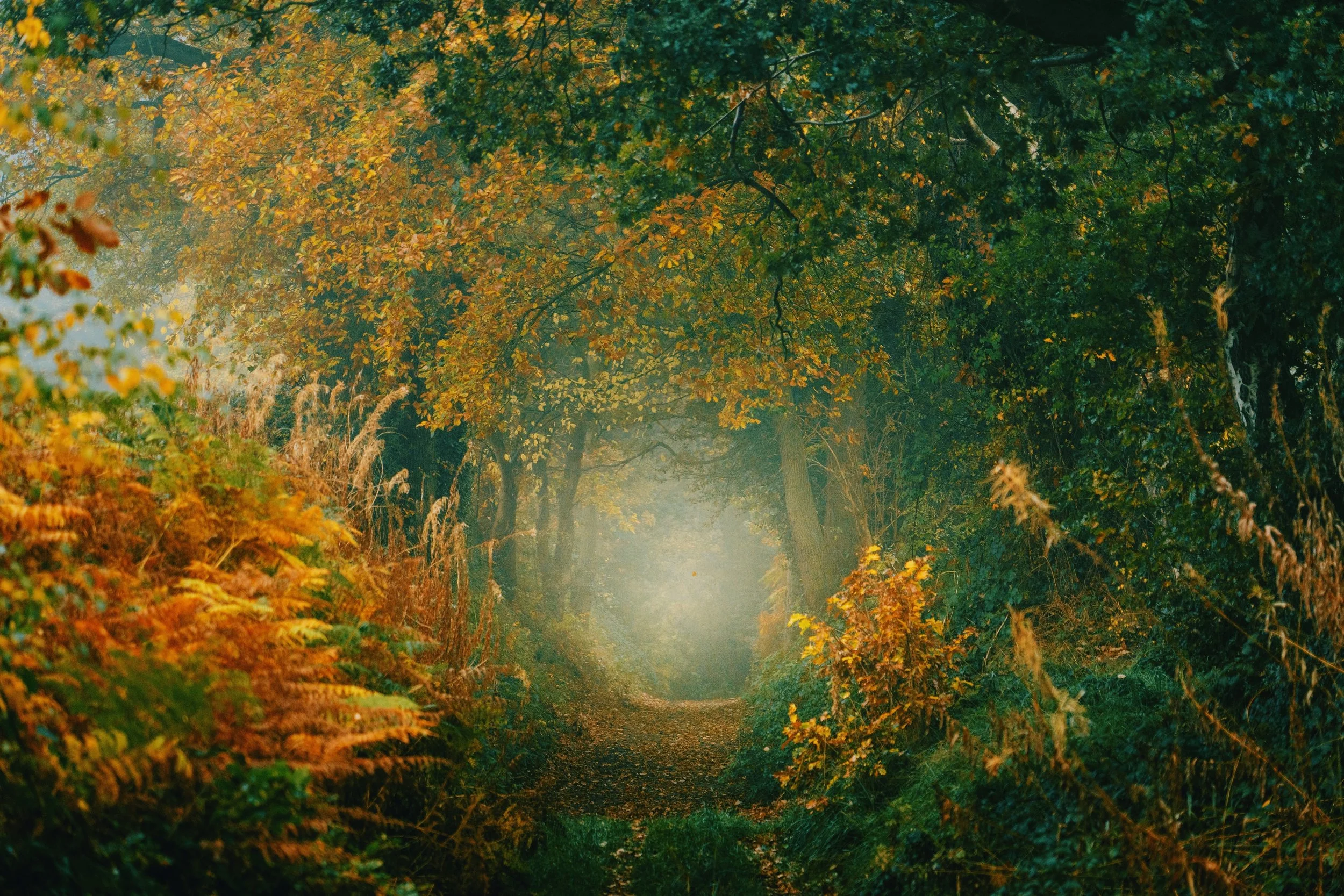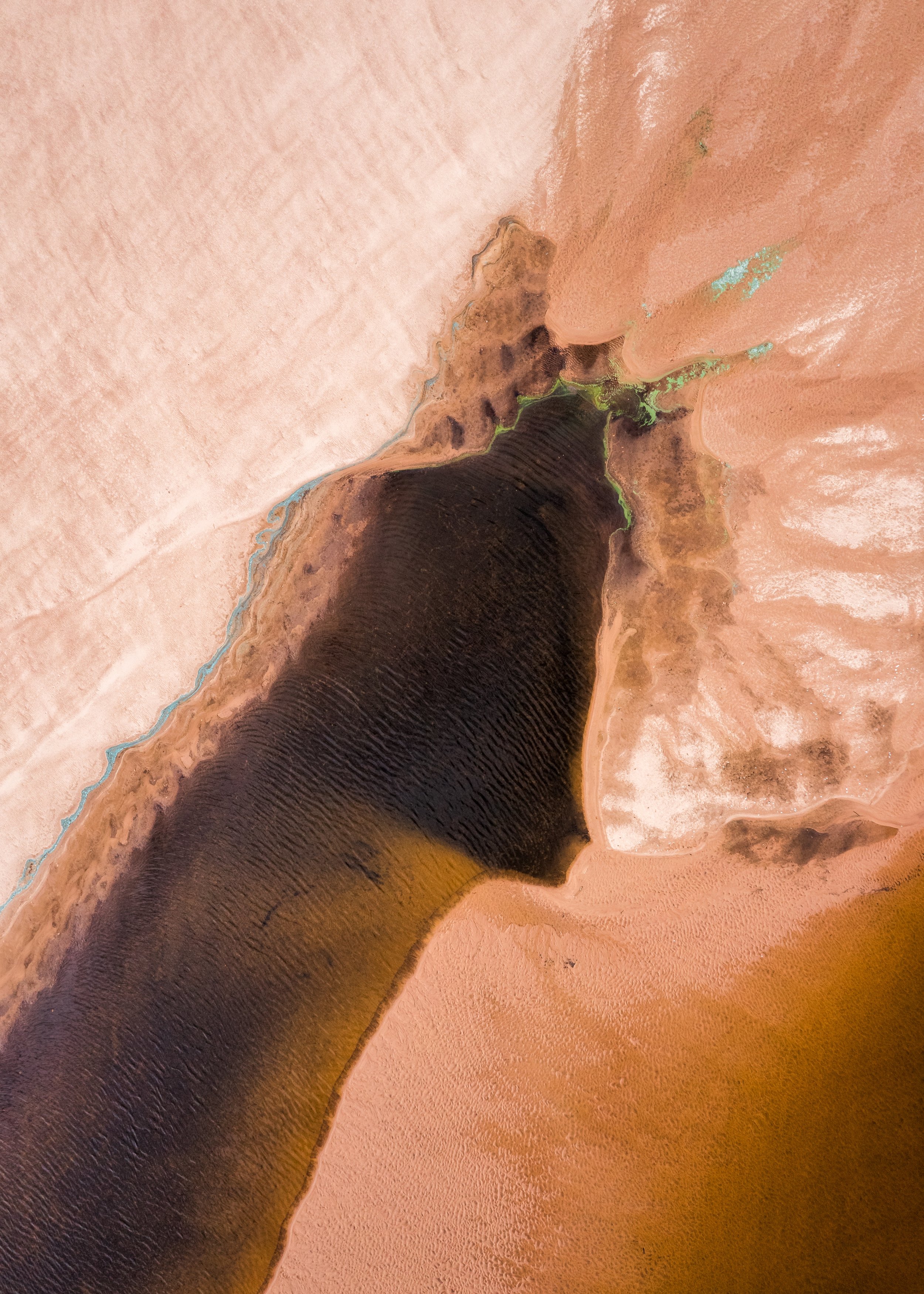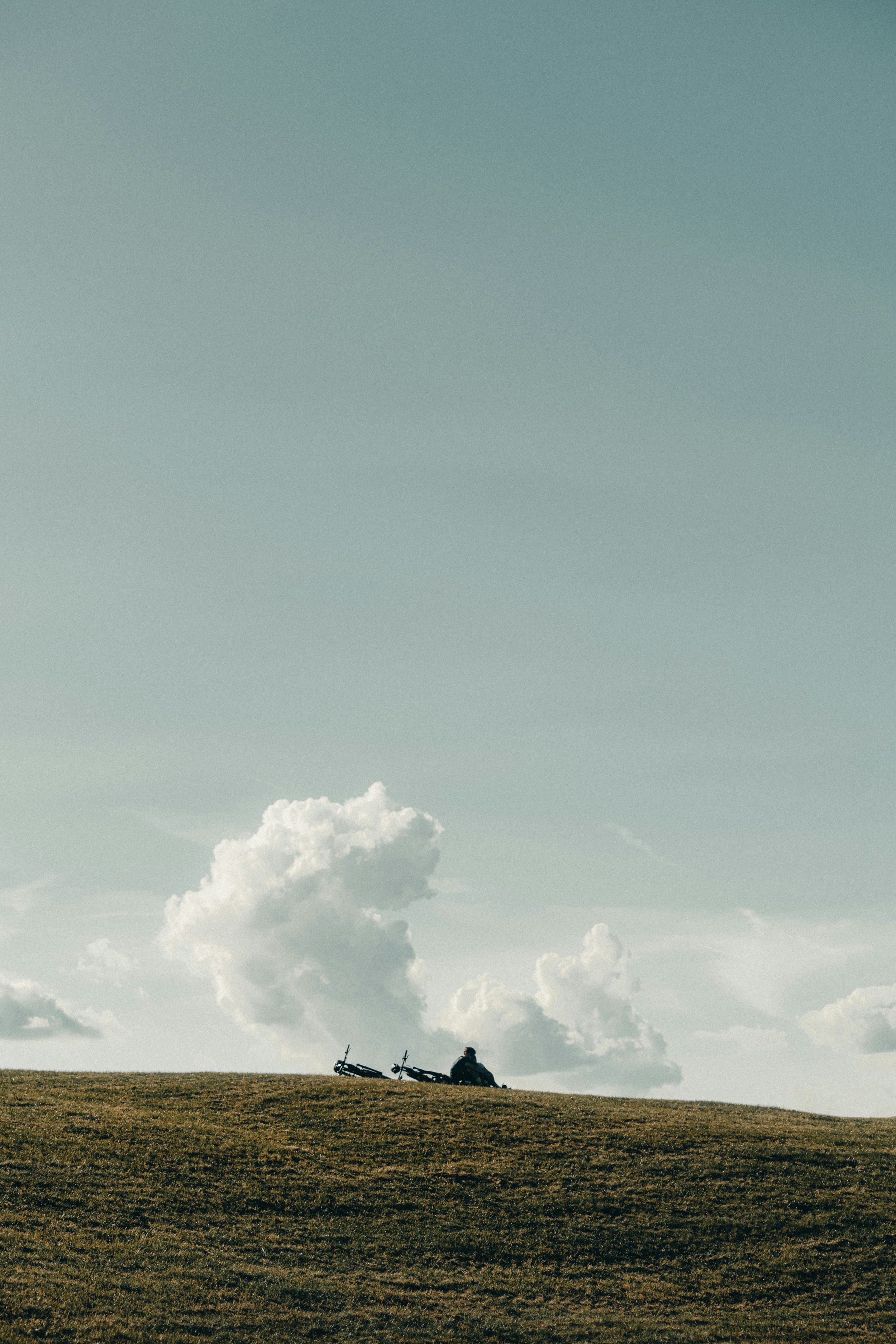To Share a Home

To Share a Home
Annelise Jolley
On Local & Global Ecosystems
This essay is featured in Ekstasis Issue 10 Print Edition
Let’s begin with the flowers.
Many years ago—an estimated 140 million, to be precise—a plant did something new. Up until that point, the world existed without blossoms. No flowers, no petals, no trumpets of color unfolding on stems. During the Triassic and Jurassic periods, dinosaurs chewed ferns and evergreen trees for nutrients. Ginkgoes and conifers flung pollen to the wind, betting on slim odds that they would find a mate.
But then a plant produced a flower. The earth’s first petals were likely tiny, but the emergence of angiosperms—the official name for flowering plants—changed everything. Were you to travel back in time to the mid-Cretaceous period, you might recognize your garden’s ancestors in the ancient hydrangeas and roses. Flowers unfurled across the surface of the earth quickly. Insects like butterflies and bees multiplied with them, transporting pollen in exchange for nectar.
Soon flowers led to fruit. For plants, fruit offered a handy package for seed transportation. And for animals, fruit presented the gift of energy transformed from sugar. Warm-blooded mammals, including humans, came to rely on fruit for nourishment. Fruit and seed-bearing crops like grains formed the basis of agriculture. And agriculture set the stage for modern civilization.
In this way, flowers initiated a new world.
*
Here in Southern California, it rained more this past winter than most of us can remember. The result, other than sun-deprived residents whining about the weather, was a superbloom. The state erupted in color. Riotous wildflowers sprang up along sidewalks and in yards. They carpeted the hillsides next to freeways and overtook the bluffs that trace the coastline. Blossoms dotted the citrus trees. During one spring run in my neighborhood, I counted star jasmine and lupine and statice and black mustard and California poppies and Oriental poppies. Their fragrance and color and diversity added a sense of excess, of luxury, to the residential streets—gems flung down from the sky. At times, the pavement disappeared beneath waist-high, weed-like daisies. They brushed my arms and thighs, and I pressed my lips closed to inhale their chamomile scent.
It’s poetic to trace our beginnings back to flowers; to think about how, in a very real way, humans are because flowers are.
As I ran through a neighborhood in bloom, I thought about the fact that billions of beings lived and died before I came to be. As the speaker in Clint Smith’s poem “Look at That Pond” says, “Tiny plankton in bodies of water like this one produce over half of the oxygen on earth. My life is made possible by trillions of tiny mysteries. I exist because of so many things I’ll never see.”
*
What does it mean to be a human member of an ecosystem? It’s a question I’ve been rolling around in my mind. Ecology is the study of relationships between organisms and their environments. The word comes from the Greek oikos—"house, dwelling place, habitation"—and the Latin logia, which means "study of." Ecology examines our relationship with our dwelling place, which humans share with other organisms. It is, in other words, the study of our interdependence.
It’s easier to imagine, I think, our connection with other species than our interdependence with them. That humans are connected to other life forms seems obvious. But for people like me who live in highly developed, urban places, our dependence on other members of our ecosystem is less visible. Our daily lives operate at a distance from our food systems, from the forests and plankton that oxygenate the air, from the microorganisms that enliven the soil under our feet. We forget the many ways we are nourished and sustained by other beings. And instead of seeing those who share our dwelling place as mutually dependent on us, we plunder and extract and exert dominion in myriad ways, many of them—like the extinction of species—irreversible.
As I write this, I’m midway through the poet Camille Dungy’s memoir Soil: The Story of a Black Mother’s Garden. The book follows Dungy’s seven-year process of converting her family’s Colorado yard into a diverse native plant garden. I love this book, even though my rental house's small front yard only allows for potted plants: cactus, agave, an olive tree, and a Meyer Lemon tree. Dungy's garden helps me imagine what could be, and to tune into the interdependent life that already surrounds me.
Planting and sustaining a native garden requires Dungy to tear out manicured lawn and haul away river rock. Before she can plant new seeds, she has to break up unproductive soil, amend it with compost, and leach away the poison of herbicides and pesticides used by the previous owner. After the labor and the planting comes the waiting. For months she prepares the earth, and then for months the seeds stay hidden in the soil’s womb.
*
Reflecting on Adam and Eve, the poet and linguist Alicia Harris notes that “the labor of the prototypic human being was to be a gardener.” Our original work, a gift to us and a way to embody our true identity, was to “till and keep” the earth (Genesis 2:15, NRSV). Or in other translations, “to tend and watch over it” (NLT) or “to work it and keep it” (ESV). As Dungy describes in her memoir, the cycle of gardening swings between tending and watching, working and resting, giving and receiving. There’s a time for cultivation and a time to let things grow as they will. Harris calls this a “passive receptivity,” but another word might be interdependence.
When you are a gardener, Harris says, your role means “stewarding the flourishing and the fecundity of a whole variety of species, not just for what they can produce, but also for their own beauty.” That is to say, we keep gardens not just to extract things from plants that are beneficial to us, but also so the plants themselves can “flex in their beauty.” To be a gardener requires the willingness to depend on other beings; it also requires a desire to work for their good. Dungy’s “prairie project” teaches her both how to give back to her dwelling place and to receive its beauty and physical nourishment. Her family comes to depend on other beings even as those beings—monarchs, goldfinches, onions—depend on them. The garden nurtures Dungy’s family and human neighbors, and it also sustains local birds and pollinators and native plants and microorganisms. “We were discovering,” she writes, “how to use less water, how to benefit more living beings, and how to build something more beautiful, more nurturing to our human and nonhuman neighbors, than what we’d inherited when we moved into this house.”
*
In the early days of my daughter’s life, my husband and I became acutely dependent on others. As we orbited around our new and supremely vulnerable child, consumed by exhaustion and exhilaration, an orchestra of people held the rhythm of our lives together. On any given day in those first weeks, we relied on family members to change diapers and wash laundry and cook meals and tend to other domestic tasks. (I have a vivid memory of my dad sanitizing the parts of my new breast pump and gamely reading its instructions aloud.) We leaned on neighbors to walk our dog and fellow parents to respond to crisis texts and friends to drop off homemade muffins which I ate standing over the sink when my blood sugar plummeted after nursing. There were lactation consultants, nurses, delivery drivers, and many others whose care allowed us to care for her.
Becoming a parent forced me into a lived experience of dependence in a way that no agricultural metaphor ever could. But interdependence is not only about receiving (gratefully though we did!) support from a wide network of people. It is also about extending that care outward, and inviting our children to do the same. It is about embodying the Trinity’s mutually giving, mutually receiving love in endless exchange.
Parenting has the potential to tenderize us to the world’s needs. As we care for our own vulnerable child, we are also invited to deepen our relationship and solidarity with others who are vulnerable. In an essay about the radical potential of caregiving, Jia Tolentino wonders why parenting doesn’t more often propel people to expand their reach of care beyond the household. “Having a child,” she reasons, “ought to attune people with no prior experience of vulnerability or hunger to the absolute urgency of those states, to the beauty and necessity of sheltering the helpless without condition.” It ought to make us quicker to extend care to others, even as we become more reliant on it ourselves, even as we care for someone completely dependent on us.
For my daughter, the newest member of our family’s ecosystem, I dream of building a wide and intergenerational network of people who help raise her. I dream of weaving a rich and diverse social fabric around her, where she receives love and returns it. Yet for all of these aspirations, it is difficult to create a life built around interdependence. For one thing, I grapple daily with my own limited capacity and selfishness. For another, the cultural waters I swim in—predominantly white, urban, upwardly mobile, professional—prioritize a more insular lifestyle. Nuclear families are prized, individualism is celebrated, and parenting offers a reason to turn inward and protect our own.
Theologian Natalie Carnes speaks about parenthood as a “shove” into a new life of mercy. “That mercy can then open you into the suffering heart of the world,” Carnes says. But, she adds, it can also cause us to retreat under the cover of self-protection. The difficulty of interdependence is that it asks us not only to accept sustenance, but also to extend it outward—which requires us to be proximate to the suffering and needs of other members of our ecosystem.
If I dream of both creating and receiving a tapestry of dependence that transcends the household unit—an extended family formed by friends, relatives, the local church, and neighbors—then I also have to be willing to extend myself as family to others outside my home. I have to be willing to see and tend to the suffering of others, rather than shield myself and my daughter from the sickness and pain outside our door.
*
In the sculpture garden of the Philadelphia Museum of Art, my friend Cat and I are playing with her two boys. We’ve stopped at a terrace with a geometric sculpture in the center: a pyramid of concrete cubes that looks like a child’s stacked blocks. The boys find sticks and we drag them through the gravel to create shapes and letters. Cat’s older son flops to the ground and mounds the gravel into hillsides, scooping it towards himself with his forearms. He plants a leaf on top like a flag.
As the boys scuff their shoes through the rocks, one of them kicks a dead bird. Its wings are tucked neatly into its body, a small brown parcel against the dull gray of gravel and sky. They immediately crouch around it, the older brother reaching out his hand to hold it. I react with the urgency of a mom used to snatching choking hazards from her daughter’s eager mouth. “Uh oh! Don’t touch that!” He looks up at me, one finger pressed to the bird’s still chest. “It’s dead,” I add, unnecessarily. Both boys are unfazed.
Cat crouches down with them and guides her son’s hand away. Death was a familiar presence in their family. Her mother-in-law, the boys’ grandmother, had died two weeks prior. Cat and her husband kept vigil with her for two nights until her death. Her sons laid with their grandmother in her hospice bed, a failing body held by two small and healthy ones. I watch Cat tell her boys that this bird might have died from a sickness. She guides their hands away, explaining that disease might still linger on its body. But the urgency and disgust I felt is absent from her voice. My impulse had been to usher them from the bird immediately. She kneels in the gravel, answering her sons’ questions and speculating with them about the bird’s life and death.
The impulse to shelter our children from suffering is natural. It is good and necessary in many cases, at many stages. But I wonder when our instinct for security might lead us away from connection and interdependence, and from seeing the face of Christ in others. When might it cause us to shield ourselves from those who require our care, and who might also care for us? When might it prevent us from teaching children the truth about the world, and its capacity for beauty and brutality alike?
As I watch Cat and her sons scoop gravel over the bird’s body, I wonder again how to offer my daughter an understanding of the world as it truly is, and of her place within our shared home.
*
It may seem that writing about interdependence between people—new parents who are cared for as they care for an infant—and the interdependence between humans and greater-than-human world—a gardener who amends her yard so native flowers can flourish—are two separate ideas. But I don’t think they are.
As humans, we are a long way from embodying our gardener identities: we have plundered where we should have sowed and extracted where we should have let things grow wild. Our damage impacts every organism that shares this dwelling place, humans included. The impacts of climate change and environmental destruction are felt first and most acutely by people who live in close relationship with the land. If my privilege causes me to ignore our planet’s sickness, I’m not just denying my responsibility to trees and rivers, but also to the people who walk to the river to collect drinking water.
When I remember that I am one member of a shared dwelling place, rather than framing myself in a category separate from “nature,” the link between human interdependence and the flourishing of the full ecosystem becomes more clear. The “natural” world is not something I can cut myself off from by closing the front door. And neither can I close myself off from others—strangers, neighbors, my community—by closing the door to them. Our ties remain. As Dungy writes, “All who live in this house are family,” and over the years I hope to cultivate that same earthy belonging amidst the superbloom in my neighborhood, the needs both inside and outside of my home, and the communities in which my daughter blossoms.
Annelise Jolley
Writer & Journalist
Annie is a San Diego-based journalist and essayist who writes about ecology, food, faith, and motherhood. Find her work at annelisejolley.substack.com
Photography by Thao Courtial
This essay is featured in the newest Ekstasis Print Edition. Enjoy the fullness of what we have to offer and support our work by buying a copy for your coffee table, office space, or reading nook.




